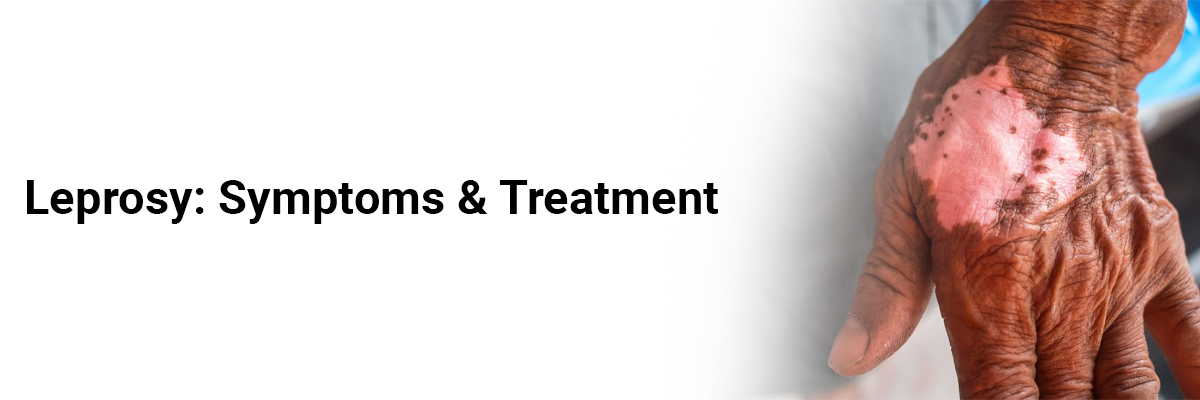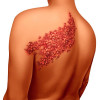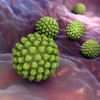
 IJCP Editorial Team
IJCP Editorial Team
Leprosy: Symptoms & Treatment
Leprosy,
also called Hansen's disease, is caused by Mycobacterium leprae, a slow-growing
bacteria. It is a chronic infectious disease predominantly affecting the
peripheral nerves, skin, eyes, nasal mucosa, and lining of the upper
respiratory tract. Leprosy is generally not life-threatening but can cause
significant physical and emotional suffering. There is no definitive cause of
leprosy. The disease is believed to be spread through contact with an infected
person or animal through nasal secretions, saliva, or other bodily fluids. The
condition is curable if detected and treated timely during the initial
stages.
It
can affect people of all age groups. In leprosy, the bacterial attack swells
the nerves, which can cause the affected areas to lose sensation. This loss of
ability to sense touch and pain results in injuries like cuts and burns. A
color change occurs in the affected area, and the skin either becomes lighter
or darker (often dry or flaky) or reddish due to inflammation of the skin.
Sign
and Symptoms of Leprosy
Leprosy
mainly affects skin, nerves, and mucous membranes with characteristic symptoms
like:
Skin
symptoms:
- A large,
discolored lesion on a person with Hansen's disease's chest.
- Patches
of discolored skin - usually flat, painless, and appear faded.
- Skin
nodules
- Skin
that is thick, stiff, or dry.
- Painless
foot ulcers
- Painless
lumps on the face or earlobes
- Loss of
eyebrow
Nerve
symptoms:
- Numbness
in the affected skin areas.
- Peripheral
muscle atrophy or paralysis.
- Nerves
that have grown in size (especially those around the elbow and knee and in
the sides of the neck)
- Loss of
vision if facial nerves are involved.
- Enlarged
nerves beneath the skin and a numb, dark reddish skin patch overlying the
nerves affected by the bacteria.
Mucous
membrane symptoms:
- Congested
nose
- Nosebleed
Physical
Deformities and Complications Associated with Leprosy
Leprosy
is known to cause a range of physical deformities and other clinical
complications. The most common deformities caused by leprosy are nerve damage,
muscle paralysis, and loss of sensation in the hands, feet, and face. In
addition, leprosy can cause thickening of the skin, loss of eyebrows, and a
flattening of the nose. It can also cause facial disfigurement, the loss of
fingers and toes, and permanent scarring. A few other deformities associated
with leprosy are:
- Complete
or partial clawing of the hand
- Inability
to close eyes ( Lagophthalmos)
- Alopecia
- Erectile
dysfunction
In
addition to physical deformities, leprosy can cause various clinical
complications. These include blindness, nerve damage, chronic ulcerations in
the sole, severe infections, and even renal failure. People with leprosy may
also experience psychological issues such as depression, anxiety, and social
ostracism.
Diagnosis
of Leprosy
The
diagnosis of leprosy is based on the type of skin lesions, the degree of nerve
involvement, and the presence of acid-fast bacilli (AFB) in the smear. The skin
lesions of leprosy are usually pale, flat patches of skin known as macules.
They may be accompanied by a sensation loss known as anesthetic leprosy. In
addition, leprosy can cause nodules, plaques, and other skin lesions.
The
initial step in the diagnosis of leprosy is a physical examination. During the
examination, the doctor will look for skin lesions and check for signs of nerve
involvement. The doctor may also take a skin biopsy to confirm the presence of
leprosy. The next step in the diagnosis is a laboratory test known as a skin
smear. This is done by taking a swab from the affected area and sending it to a
laboratory for testing. The test is used to look for the presence of acid-fast
bacilli (AFB). If the test is positive, then the diagnosis of leprosy is
confirmed. The physician may also perform a lepromin skin test to determine the
type of Hansen's disease.
Treatment
of Leprosy
Once
leprosy has been diagnosed, treatment should be started immediately. Treatment
involves a combination of antibiotics and anti-inflammatory drugs. The most
commonly used antibiotics are dapsone, rifampicin, and clofazimine. These drugs
are usually taken for 12 months or longer. In addition, other drugs, such as
thalidomide and immunosuppressants, may also be prescribed to reduce
inflammation and improve the patient's quality of life.
Surgery
may sometimes be required to restore function and improve physical appearance.
In addition, occupational therapy, physical therapy, and emotional support can
help people with leprosy to cope with their physical deformities and emotional
distress.
Regular
follow-up visits to the doctor are essential to ensure that the patient is
responding to the treatment.
The
Bottom Line
Leprosy is a serious
condition that can cause disfigurement and disability if not treated early.
Physical deformities, psychological issues, and other complications can be
life-altering. It is crucial to be aware of the signs and symptoms of leprosy
and seek medical attention if any of them are present. Early treatment prevents
further tissue damage, the spread of the disease, and severe health
complications, thus allowing the patient to live an active life.

IJCP Editorial Team
Comprising seasoned professionals and experts from the medical field, the IJCP editorial team is dedicated to delivering timely and accurate content and thriving to provide attention-grabbing information for the readers. What sets them apart are their diverse expertise, spanning academia, research, and clinical practice, and their dedication to upholding the highest standards of quality and integrity. With a wealth of experience and a commitment to excellence, the IJCP editorial team strives to provide valuable perspectives, the latest trends, and in-depth analyses across various medical domains, all in a way that keeps you interested and engaged.




















Please login to comment on this article